While these rankings are ultimately subjective -- this is, after all, my opinion of each system's relative merits -- I base them on as broad a collection of information as I can. I've seen many of these prospects, I've talked to many scouts and executives about prospects, and I've talked to team officials about their own systems. Within each system, I'll rank at least 10 prospects, but these rankings consider everything in each system. Most teams have more than 10 players within their minor leagues who project to be better than replacement-level big leaguers, and all of those guys count.
I'd rather have potential stars, even if there's some risk involved, but there's also real value in being able to provide your own fifth starters or utility players without having to pay for them on the open market. That means some teams here toward the top of the list got "credit" for 20 or more players in their systems, whereas those in the bottom third top out around 15 names. For the bottom few teams, even finding a dozen names I felt confident had a good chance of future value was difficult.
I do favor prospects with higher upsides (or "ceilings") over those with less potential to become stars but higher probability of reaching the majors in some role. Few clubs are able to afford stars on the open market, so developing your own is critical for half or even two-thirds of the franchises in baseball right now. And if you have a prospect who projects as a star, you have the currency to acquire almost any major leaguer you want. The teams in the top 10 have potential stars and a lot of second-tier prospects with future big league value, while the teams in the bottom 10 don't have much of either, with two clubs lacking any top-100 prospects at all.
Editor's note: These rankings were finalized before Thursday night's Marlins-Brewers trade that sent Christian Yelich to Milwaukee for four prospects.
2017 rank: 1
Yep, I know they lost a few prospects in MLB's punishment of the front office for rules violations, but the ones they lost hadn't gained much value since signing, while the players they kept, mostly from the draft and trades, by and large took steps forward last year. New GM Alex Anthopoulos will be the beneficiary of the work of his predecessor, John Coppolella, who worked to accumulate young pitching at all costs, which puts Atlanta in position to build a young, cost-controlled rotation for years and will also free the team up at some point to spend on offense. The system is marginally shallower than it was last year, but another good draft this past June helped make up for those losses and a few promotions.
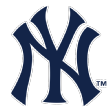 2. New York Yankees
2. New York Yankees
2017 rank: 2
The brilliance of Brian Cashman has been in how he has deployed the products of his farm system to bolster the big league club while holding on to the core guys. In another era, Aaron Judge or Gary Sanchez or Luis Severino would have been used to trade for established veterans, but Cashman has held on to the right guys -- you might even argue he has been too conservative in trading prospects, but I doubt Yankees fans would complain right now. Even in trades for Giancarlo Stanton and three players from the White Sox at the deadline, the Yankees have kept their top tier of prospects intact. The result is a system with five guys in the top 100, three more with strong cases and continued depth for future acquisitions.
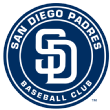 3. San Diego Padres
3. San Diego Padres
2017 rank: 3
The Padres remains thin at the top minor league levels, though they will have at least one top-50 prospect in Triple-A and Double-A this year. Their strength will be the ridiculous number of high-ceiling athletes running around from high-A Lake Elsinore down to extended spring training once the season starts. The Fort Wayne club might be so young that it needs a chaperone to take a road trip. There are shortstops growing from a tree just outside of the team's Peoria complex. Even when one big-money kid falters in his first year, two more step in to take his place on the depth chart. Plus, there are many people in the industry who think the Padres got the best player in the 2017 draft in Mackenzie Gore. It might be slow going in the majors, but the future remains extremely bright in San Diego (and dry and 75 degrees too).
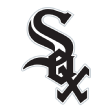 4. Chicago White Sox
4. Chicago White Sox
2017 rank: 10
The White Sox had a case for the No. 1 overall system, but a few of their best prospects -- Yoan Moncada, Lucas Giolito and Reynaldo Lopez -- lost rookie eligibility in August or September, while others had disappointing seasons, including Carson Fulmer and Zack Collins. This remains the deepest White Sox system in ages, however, with several potential stars and some interesting buy-low candidates GM Rick Hahn picked up in trades over the past year. If we were talking under-25 talent from the majors on down, I think the Sox would be at the top.
 5. Philadelphia Phillies
5. Philadelphia Phillies
2017 rank: 14
The Phillies' system had a big year, even with a rough debut from the No. 1 overall pick in 2016 (Mickey Moniak), as several of the Phils' best pitching prospects had great seasons that prompted promotions, and their second-rounder from 2015, Scott Kingery, went from eight career homers to 34 with a huge power surge across two levels. The team's international department, run by Sal Agustinelli, continues to churn out prospects, mostly pitchers but also a few position players creeping up the lowest levels. The Phillies have great depth up the middle, with one potential middle-of-the-order bat on the way in Jhailyn Ortiz.
 6. Cincinnati Reds
6. Cincinnati Reds
2017 rank: 8
The Reds have been deep for the past two or three years, but for the first time in a while, they have a couple of potential stars atop the system with their past two first-round picks, Nick Senzel and Hunter Greene. They haven't had as much success in the international market as they have in the draft and through trading for prospects, with most of their big-money international signs failing to meet expectations thus far.
 7. Tampa Bay Rays
7. Tampa Bay Rays
2017 rank: 19
The Rays must have a productive farm system to be competitive, and the good news is that this system looks like it'll be productive for the next few years, more on the position-player side than the pitching side (though you could put Brendan McKay in both buckets at the moment). They might be a little heavy on corner bats.
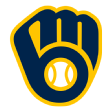 8. Milwaukee Brewers
8. Milwaukee Brewers
2017 rank: 6
It was a rough year for Brewers prospects as a whole, with almost the entire group that played in high-A Carolina struggling for one reason or another, and they had four players fail to make this year's top 100 after appearing on last year's. A solid draft and a big step forward for right-hander Corbin Burnes mitigated at least some of that damage.
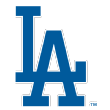 9. Los Angeles Dodgers
9. Los Angeles Dodgers
2017 rank: 5
The Dodgers' system is getting more top-heavy after trades and promotions, though mid-tier prospects aren't likely to end up taking lineup or rotation spots in Los Angeles anyway. The Dodgers still have several likely stars up top and a few high-beta prospects, such as DJ Peters and Mitch White, who have high upside with lower probability and don't offer that middle ground of potential outcomes.
 10. Minnesota Twins
10. Minnesota Twins
2017 rank: 11
It certainly helps when you pick first overall, but the Twins have slowly been adding talent to their farm the past few years through the draft and international signings, and even with some high-profile pitchers who haven't panned out, it's a comfortably above average system. They've also continued to fare well with lower-dollar signings in the international market, such as Brusdar Graterol and Lachlan Wells.
 11. Colorado Rockies
11. Colorado Rockies
2017 rank: 9
The Rockies' system was dented a little last year by trades to bolster the big league team and the lack of a first-round pick, but it still has a strong top tier of seven or eight prospects with at least average major league ceilings. The Rockies might have had the worst injury luck of any team last year, with five recent first- or second-round picks missing at least half the season. Supplemental first-rounders Mike Nikorak and Robert Tyler missed the entire year with Tommy John surgery and shoulder soreness, respectively.
 12. St. Louis Cardinals
12. St. Louis Cardinals
2017 rank: 13
The Cardinals don't have a top-20, elite-level prospect, with only Alex Reyes, who is coming back from Tommy John surgery, close to that, but the system is very deep in potential big leaguers, especially in the outfield and for the back of a rotation. The Cardinals have at least six outfield prospects who look like they'll end up starting for someone in the majors.
 13. Houston Astros
13. Houston Astros
2017 rank: 12
The system has been hurt by trades, but flags fly forever -- and the Astros truly did have a glut of prospects at several spots, with no chance of playing time for traded players such as Colin Moran. They've kept their two top guys, however, including Forrest Whitley, the No. 1 pitching prospect in the minors, and the early returns on their 2017 draft class are promising as well.
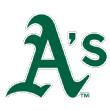 14. Oakland Athletics
14. Oakland Athletics
2017 rank: 23
The A's restocked their system's top tier with the Sonny Gray and Sean Doolittle/Ryan Madson trades, with the returns accounting for four of their top six prospects. Their 2016 draft class lost two pitchers to injury, but three of their top five picks had excellent full-season debuts last year, with A.J. Puk shooting into the global top 20.
 15. Pittsburgh Pirates
15. Pittsburgh Pirates
2017 rank: 4
The Pirates have added talent to their system with this offseason's trades, but they didn't land any top-100 prospects for Gerrit Cole or Andrew McCutchen. Most of their top hitting prospects had down years as well, whether due to injury or lack of power production. Their 2017 draft class has a few high-ceiling high school kids up top, so it's very promising right now but could need three or four years to start to impact the major league team.
 16. Cleveland Indians
16. Cleveland Indians
2017 rank: 17
Despite two straight division titles, Cleveland hasn't gutted its farm system in the process, losing just two major prospects in trades along the way -- both in the trade for Andrew Miller. The Indians' top tier is still strong, with several high-upside prospects scattered across the organization, but they are probably the thinnest they've been beyond the top eight to 10 names in several years, with a definite lack of pitchers who have average-starter-or-better ceilings.
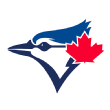 17. Toronto Blue Jays
17. Toronto Blue Jays
2017 rank: 21
The two teenage wunderkinds dominate this system, which had a rough year on the pitching side, with the Double-A rotation full of guys who regressed from 2016 (including Conner Greene, who went to St. Louis in the Randal Grichuk trade). A very college-heavy draft in 2017 was highlighted by junior college right-hander Nate Pearson, who immediately became the team's top pitching prospect.
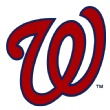 18. Washington Nationals
18. Washington Nationals
2017 rank: 22
It's kind of remarkable that the Nats have avoided becoming a bottom-five system, even with numerous prospect trades to bolster their playoff-bound rosters. They lost high picks and high-ceiling international signings, yet brought in two potential stars and quite a bit of lower-level depth, mostly in position players. Their international scouting department deserves a ton of credit for continuing to stock the system. When they've spent big in Latin America, their track record is pretty good.
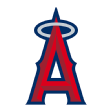 19. Los Angeles Angels
19. Los Angeles Angels
2017 rank: 27
After years near the bottom of these lists, including 2016, when I wrote that they had the worst farm system I'd ever seen (which they did), the Angels are the comeback kids, with a couple of promising draft picks boosted by a slew of international signings, mostly pitchers, starting to make noise in pro ball. Their first-rounders in 2015 and 2016 have been lapped by the second-rounders in those years, and there are scouts who thought their first-round pick in 2017, Jordon Adell, was a top-three talent in the class.
 20. Detroit Tigers
20. Detroit Tigers
2017 rank: 24
This might have been the worst system in baseball without the trades the Tigers made this summer to bolster their system and start the much-delayed rebuilding effort. Their top two prospects came in the Verlander trade, another in their top 10 came in the Justin Wilson trade, and three more guys in their top 20 came in such deals.
 21. New York Mets
21. New York Mets
2017 rank: 7
The Mets have been remarkably productive the past five years, but promotions and failure to get prospects back in trades have hurt them, as did the loss of their first-round pick in 2015 for free agent Michael Cuddyer, who produced 0.5 WAR before retiring after one season. Their 2016 draft class got off to a rough start, with two of the top four picks missing 2017 due to Tommy John surgery, which also felled former top-100 prospect Thomas Szapucki. I thought the Mets nabbed two first-round talents in 2017, however, with top-100 prospect David Peterson and second-round pick Mark Vientos.
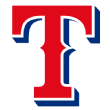 22. Texas Rangers
22. Texas Rangers
2017 rank: 15
Most of the good stuff in the Rangers' system is far away, including the lone top-100 prospect, Leody Taveras. As usual, the Rangers have a lot of high-beta upside plays in their lower levels, including 2017 first-rounder Bubba Thompson, who earned positive reviews from scouts who saw him in the Arizona Rookie League. They're extremely light on starting pitching, however, which is alarming, given their current rotation, with only one starter under a guaranteed contract beyond 2018 and team options on three others for that season.
 23. Baltimore Orioles
23. Baltimore Orioles
2017 rank: 25
The Orioles are somewhat permanently in the penalty box in these rankings because they won't spend big on the international market, but they have been drafting better and added three intriguing arms in this year's crop to the trio of position players atop their system. A trade of Manny Machado, rumored but not yet close, would go a long way toward putting this system in the top half, where it probably needs to be to keep the O's competitive.
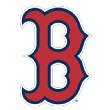 24. Boston Red Sox
24. Boston Red Sox
2017 rank: 16
To quote one of my favorite cartoon characters, "The system is down, yo." Years of promotions coupled with several big trades have finally tumbled the Red Sox from perennial top-10 status to the bottom third, and there's a lot less certainty among their top 10 than there has been at any point since I started ranking prospects within orgs. Their 2017 draft class was one of the best, given where they picked, with three potential first-round talents coming in their first five picks.
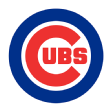 25. Chicago Cubs
25. Chicago Cubs
2017 rank: 18
Trades for Aroldis Chapman, Jose Quintana and Justin Wilson have taken a toll on this system, as did the lack of a first- or second-round pick in 2016, though I doubt Cubs fans are complaining (yet). Six of the Cubs' top 10 prospects come from the international market, plus one more from a trade, but they lack the depth they once had or the high-end position-player prospects to match the Gleybers and the Eloys, now both top 10 in the game.
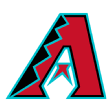 26. Arizona Diamondbacks
26. Arizona Diamondbacks
2017 rank: 30
This is a massive improvement, given what GM Mike Hazen inherited, and the new regime didn't get to add to the system via trades because the Diamondbacks were in contention from early in the season, even dealing some second-tier guys to add J.D. Martinez before the trade deadline. While it's still thin, the system is definitely trending upward, with last year's draft and international signings helping to bolster it.
 27. Kansas City Royals
27. Kansas City Royals
2017 rank: 26
The Royals could get a bonanza in the 2018 draft if they land extra picks for their departing free agents, but right now, their system shows the wear of several years of trades to bring two pennants to Kansas City. The system is actually still deep, but the top tier is absent. They didn't place anyone in the top 100 or get particularly close, as their best prospects are either low-ceiling or very far away from the majors.
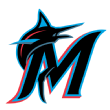 28. Miami Marlins
28. Miami Marlins
2017 rank: 29
They were dead last before the series of trades that brought back some prospects, albeit nothing close to what you'd expect when trading players with MVPs and All-Star appearances. Their top three prospects all came in trades, which they needed because they never spend in the international market and their drafts haven't produced a 2-WAR big leaguer since 2011. (The past four players they drafted to even produce 1 WAR in the majors are all gone, three in trades plus the late Jose Fernandez.)
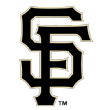 29. San Francisco Giants
29. San Francisco Giants
2017 rank: 20
The Giants just traded the prospect who was No. 2 in their system, Bryan Reynolds, and dealt another top-three prospect in their system, Christian Arroyo, before that. They haven't had a first-round pick perform as expected in the big leagues since Joe Panik (2011, 6.8 career WAR) and haven't drafted a 10-WAR player since 2009 (Brandon Belt, 19.9). Their international signings have fared worse -- the Giants haven't received even a 1-WAR season from a player they signed as an international amateur since Pablo Sandoval left. They do pick second in the draft this year, which will give them a shot at a potential star and the bonus pool to get creative with later picks. It's a huge opportunity on which they need to capitalize.
 30. Seattle Mariners
30. Seattle Mariners
2017 rank: 28
They don't have a top-100 prospect -- their best prospect is still in the midst of an uncertain comeback from a major knee injury -- and they have the shallowest system in the majors. This is largely by design, as GM Jerry DiPoto has traded many prospects to field the best major league team he can, but boy, this reckoning will be ugly when it comes.

 1.
1.